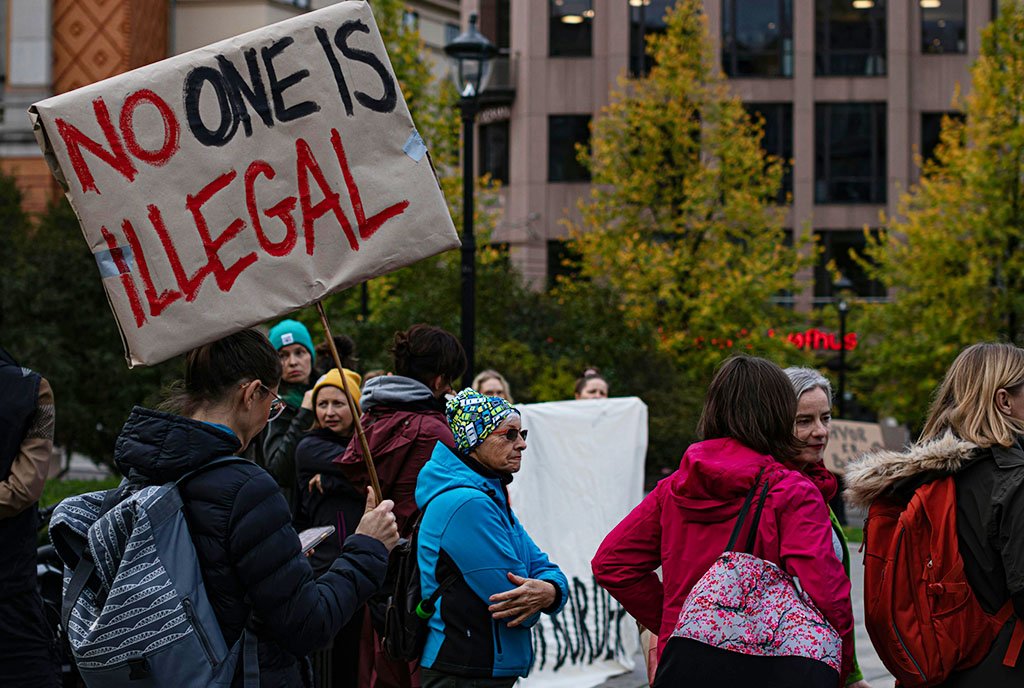
“We have observed a disconcerting pattern where Black women leaders are vacating their roles, with some leaving the non-profit sector altogether, citing hostility toward their leadership, strain on their health and well-being, unfair job expectations, and limited opportunities for career progression” (3).
“We have observed a disconcerting pattern where Black women leaders are vacating their roles.”This is the opening of a new report by the Washington Area Women’s Foundation entitled Thrive As They Lead: Advancing the Infrastructure to Support Black Women Leaders in the D.C. Metro Area Nonprofit Sector. It is the first glimpse of a funder tackling what might be one of the sector’s biggest, as yet untold story, indeed, a trend: the pushing out of Black women in leadership.
While Black women leaders are at the forefront of innovation, they “are operating in unprecedented times, with mounting barriers and challenges to their leadership—driven by systemic inequities deeply embedded in sectors and systems” (5).
The foundation’s report responded to the stories they were hearing by gathering a group of Black women leaders and letting them speak unapologetically about their experiences and the steps needed to reverse this trend. Tamara Wilds Lawson, president and CEO of the foundation writes, “Their words call us to take collective responsibility for ensuring Black women and Black gender-expansive leaders have the resources and support they deserve to thrive in this sector which relies so heavily on their valuable labor” (3).
The report seeks to answer one core question: “What measures must be taken to provide Black women and Black gender-expansive leaders with the support, resources, and infrastructure they need to thrive as they lead?” (5).
It is the first glimpse of a funder tackling what might be one of the sector’s biggest, as yet untold story, indeed, a trend: the pushing out of Black women in leadership.
Taking Leadership in a Time of Turmoil
The report describes the conditions over the last few years that surround the rise of Black women into leadership positions as, “marked by a global pandemic, public health crisis, shake-up of our care infrastructure, and a racial reckoning.” Throughout all of this, it goes on, “Black women and Black gender-expansive people have stood on the frontlines…while continuing to build and lead dynamic organizations” (5).
However, while they have been able to shatter glass ceilings, the lack of “necessary infrastructure to support their leadership” has left them “teetering on the edge of a glass cliff” (5). The report defines glass cliff as a phenomenon where “Black women are elevated into senior leadership roles with the expectation of addressing organizational deficiencies that their predecessors were unable to overcome without added support or resources” (5).
This has led to the current trend of Black women leaving leadership roles across the public and private sectors, citing “unsupportive work environments, overwhelming workloads, and experiences of microaggressions—circumstances uniquely created at the intersection of racism, patriarchy, and anti-Blackness in the workplace” (5). Some “have been portrayed negatively in the media” (5).
These leaders report “overwhelming exhaustion, chronic stress, and burnout as they navigate their roles” (6).
“What measures must be taken to provide Black women and Black gender-expansive leaders with the support, resources, and infrastructure they need to thrive as they lead?”
For the past two years, this has been the main topic of every gathering I have attended in the field, and many one-on-one conversations. For example, at the end of an event I attended this summer of about 50 Black nonprofit and philanthropic leaders, as we milled around saying our goodbyes, Black women shared that they were on medication—mostly anxiety, depression, and heart medicine—as a result of taking leadership. One joked, “You could’ve passed the Adderall around with our lunch!” As they talked about the challenges of leadership, another said, “I didn’t think when I stepped into leadership I would become the enemy.”
Not all were on medication. Somatic coaching was another approach. One shared that the steps of leadership took a toll on her body and she sought out a somatic coach because she was beginning to get sick.
The Quiet Backlash
Of the 32 presidents, CEOs, and executive directors the foundation heard from:
-
- “Nearly 70% of respondents agreed or strongly agreed that Black women’s leadership has been notably under attack in recent years” (6).
-
- “90% of respondents expressed that their occupations have had detrimental effects on their health and well-being, manifesting as chronic stress, fatigue, elevated blood pressure, and impacts on mental health” (6).
The report notes that this data “echoes other efforts” (6). They cite another recent report1 that finds that “Black women have experienced burnout in their roles” (6).
More specifically, 10 core themes emerged from the study. They all fall under the umbrella of a “fundamental absence of trust in their leadership” (10). The report explains, “This pervasive lack of trust materialized across multiple dimensions—including fundraising, board engagement, staff management, and wellness policies—wherein their leadership and decision-making were constantly questioned, challenged, and undermined” (10).
Sign up for our free newsletters
Subscribe to NPQ's newsletters to have our top stories delivered directly to your inbox.
By signing up, you agree to our privacy policy and terms of use, and to receive messages from NPQ and our partners.
- “LEADERSHIP: Black women leaders face relentless scrutiny, challenges, and undermining of their presence. Their capacity to exhibit innovation and ambition is simultaneously expected and suppressed, constrained by societal expectations that limit their departure from conventional or traditional forms of leadership. Black women are not able to lead as their authentic selves” (12).
- “SUPPORT: Mentorship, community, and support networks play crucial roles in facilitating, strengthening, and sustaining the leadership of Black women and Black gender-expansive leaders” (14). Though respondents also report that there are not enough of these.
- “EXPECTATIONS: Black women and Black gender-expansive leaders in the workplace encounter daunting obstacles, including navigating unrealistic expectations, microaggressions, and unacknowledged efforts, as they take on significant responsibilities without proper recognition, rewards, or promotions for their contributions” (16).
- “VULNERABILITY: Black women and Black gender-expansive leaders encounter limited opportunities to seek support or display vulnerability in their workplaces without their leadership authority being undermined, as there are few available resources or individuals they can turn to” (18).
- “RESISTING SCARCITY: The current D.C. public and nonprofit sector environment produces a scarcity mindset, causing Black women-led organizations to feel like they need to prioritize siloed and isolated work over the preferred collaborative work and partnerships to drive innovative strategies that attract funding…” (20).
- “BOARDS: Black women and Black gender-expansive leaders experience varying levels of support from their boards, with a significant number facing obstacles, such as lack of trust in their leadership, inadequate board governance, and misalignment with their organizational vision” (22).
- “COMPENSATION: Black women and Black gender-expansive leaders experience persistent underpayment and undervaluation, despite their significant contributions to their organizations, with some increasing their organizations’ budgets substantially during their tenure” (24).
- “FUNDING: Black women and Black gender-expansive leaders encounter distinctive obstacles in accessing adequate funding for their organizations, including navigating complex application and reporting requirements, as well as the added burden of proving their worthiness as responsible stewards of funders’ money” (26).
- “DONOR RELATIONSHIPS: Black women and Black gender-expansive leaders highlight the existence of entrenched power dynamics in their relationships with donors. They face challenges finding common ground and maintaining authenticity while navigating the unwritten rules and expectations of donor interactions” (28).
- “WELLNESS: Black women leaders express profound exhaustion in their roles, Many contemplate or are actively planning to leave their positions, citing few opportunities for uninterrupted rest and inadequate infrastructure to support their well-being” (30).
Building Supportive Infrastructure
Black women leaders do not find adequate leadership programs “addressing the unique needs of Black women in leadership roles” (33). What does exist “relies on within-group, resources support—not a broad set of partners, together identifying the common barriers and solutions to supporting Black women’s leadership” (33).
The respondents further stated that the experiences of Black women “deserved a focus, space, and strategy of its own” (33). And “[t]hey want a space that was curated and convened for and by Black women, not others who do not share the same experiences” (34).
Specific ideas include:
-
- A COHORT LEADERSHIP DEVELOPMENT PROGRAM with skill-building, strategy, navigating racism/sexism, authentic leadership, and fundraising sessions; informal gatherings for connection, celebration, and play; and mentorship and coaching.
- RETREATS that support the health and well-being of Black women leaders, and prioritize self-care, reflection, rejuvenation, and personal growth.
- Establishing a GENERAL FUND, that is unrestricted and dedicated to supporting Black women leaders. Funds can be used for healing, executive coaching, training, activities, events, and infrastructure.
- Creating LEARNING INSTITUTES for graduate-level programs tailored to Black women leaders, including management, leadership, and conflict management skills.
- TRAINING for FUNDERS and PHILANTHROPIC LEADERS that helps them remove the barriers to Black women leaders in fundraising.
- REGULAR CONVENINGS and EVENTS exclusively for Black women leaders that promotes joy, play, creativity, and celebration.
The report concludes with a call to action:
Partners and strategists across sectors should be invested in what is happening….This report also serves as a resource for boards and funders to step up, answer this need, and allow the D.C. metro area to pave the way in creating a sustainable support infrastructure for Black women and gender-expansive leaders. Black leaders call for an urgency to identify and dismantle systemic disparities within the public and nonprofit sectors in order to improve their ability to create positive and meaningful change so that they can not only lead but thrive. Let’s follow their lead (38).
Beyond Infrastructure, Healing Toxic Cultures
But is supportive infrastructure enough? Yes, Black women need support. But, if they are being attacked, they also need protection. Why not a union or an association—a place that Black women can not only turn to, but which actively looks out for them; that investigates every time a Black woman leaves a position of power; or, better yet, that defends her so she isn’t pushed out; so that she is given the time to grow in her leadership. Black women need support, but they also need collective power.
And we can stretch our imaginations even beyond this to imagine a world where protection isn’t necessary.
In The Myth of Normal: Trauma, Illness & Healing in a Toxic Culture, Dr. Gabor Maté writes, “those features of daily life that appear to us now normal are the ones crying out the loudest for scrutiny” (7). In fact, he argues that “much of what passes for normal in our society is neither healthy nor natural, and that to meet modern society’s criteria for normality is, in many ways, to conform to requirements that are profoundly abnormal in regard to our Nature-given needs—which is to say, unhealthy and harmful on the physiological, mental, and even spiritual levels” (7–8).
The aforementioned study outlines the symptoms of a culture that makes Black women leaders sick.
Like many others, Maté observes that illness is not random; it is an expression of one’s experiences, one’s environment. Environments that make us sick are toxic cultures, which Maté defines as “unsuitable for the creatures it is meant to support” (4).
A supportive infrastructure, or even a protective one, simply mitigates the symptoms. It is not enough. The question we must answer is: How do we develop healthy cultures for Black women’s leadership?
Notes
1. https://everylevelleads.com/wp-content/uploads/2022/06/Black-Women-Thriving-Report_2022.pdf











